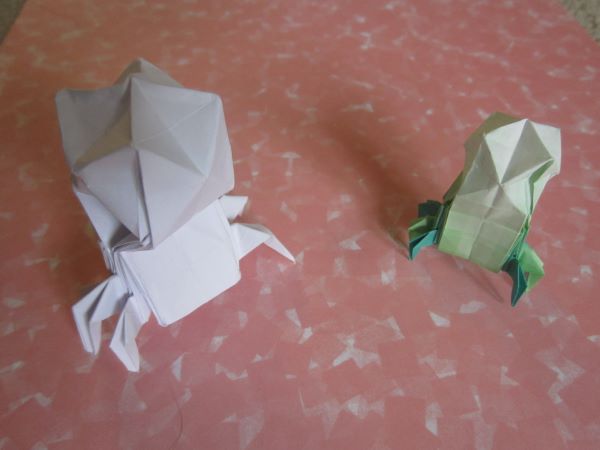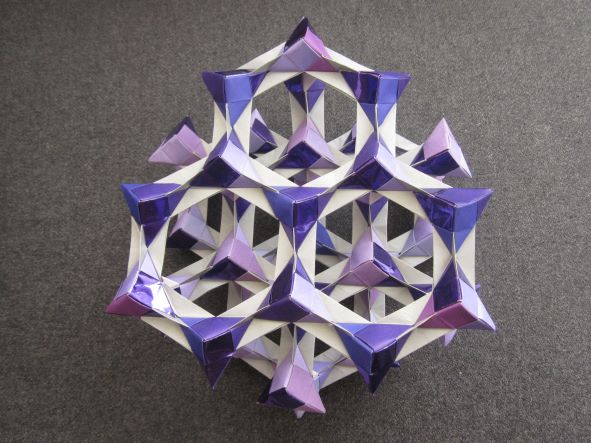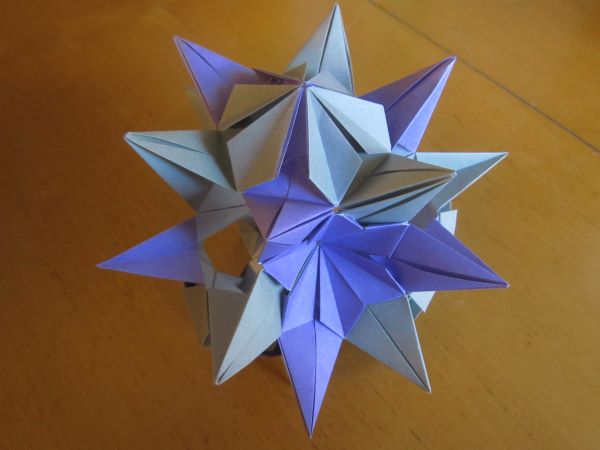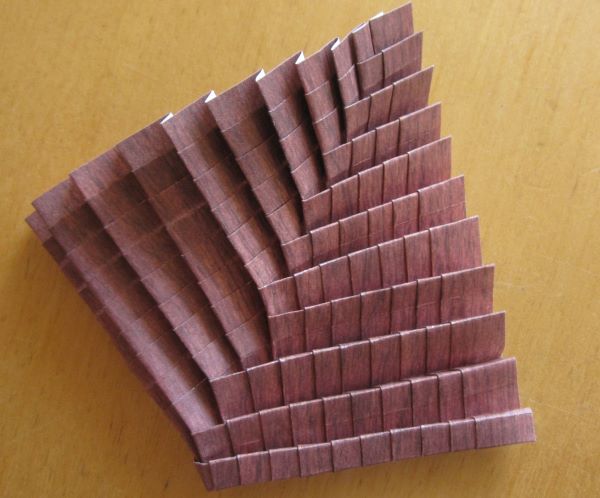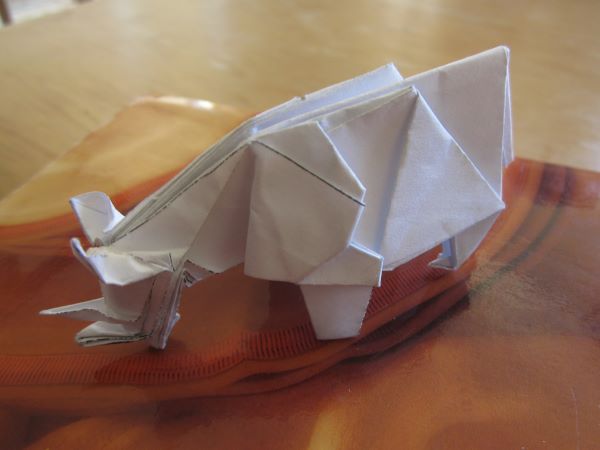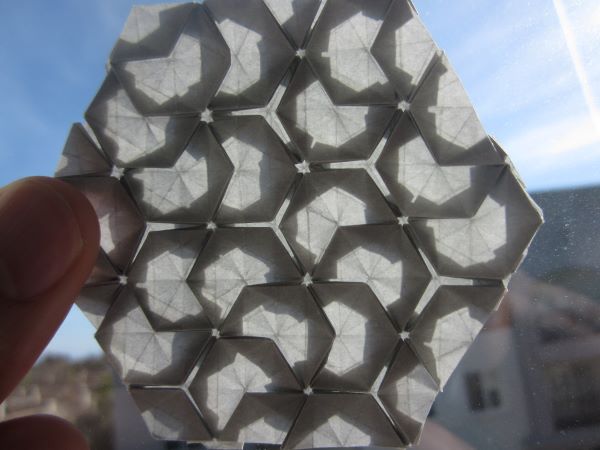
Aperiodic Chevron Tessellation, designed by me
Did you hear? Someone discovered an aperiodic monotile! Obviously, these are origami life goals. And, I’m making it out like a joke, but I’m pretty sure I’m not the only origamist who was thinking that.
Oh, but this origami isn’t the aperiodic monotile. Instead, I read their paper, and was inspired to create a different aperiodic tiling. And in the mean time, I learned how an aperiodic tile ticks.

